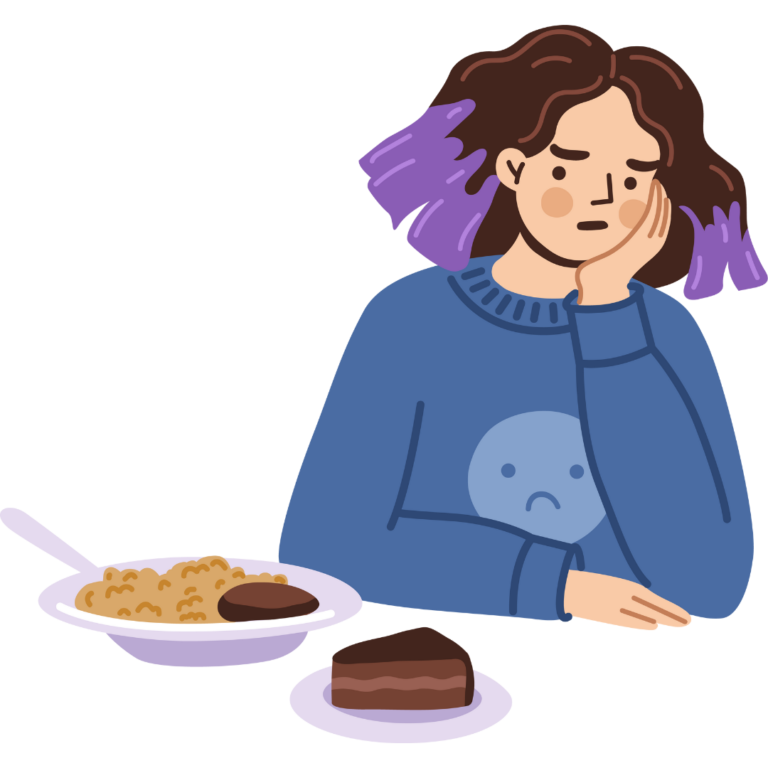When people hear the term “eating disorder” they often think of someone who thinks they’re fat and starves themselves. While this is an eating disorder, anorexia to be specific, it’s not the only eating disorder that exists. Not all eating disorders include starving or ideas of an “ugly” body; some eating disorders even have nothing to do with body image. There are plenty of eating disorders that exist for different reasons and have different symptoms.
An eating disorder is defined as a “serious and often fatal illness that is associated with severe disturbances in people’s eating behaviors and related thoughts and emotions”(www.ncbi.nlm.nih.gov). Eating disorders can affect a person’s physical, mental, and emotional state in negative ways. The term eating disorder is a broad term that covers multiple different disorders. The thing that groups all eating disorders is a person’s eating habits that are caused by mental and emotional issues, not any physical ones such as a sickness or disease.
Anorexia
Anorexia is one of the most well-known eating disorders, it is often characterized by a poor idea of body image and a fear of being overweight. This causes many people with anorexia to starve themselves or over-exercise in hopes of losing weight. Anorexia is often accompanied by body dysmorphia, a mental illness in which a person obsesses over a perceived flaw in their appearance, oftentimes leading patients to imagine themselves as having more weight than they do.
Bulimia
Bulimia is an eating disorder in which a person overeats and then often due to guilt, vomits it out, over-exercises, or strictly diets one’s self. Just like anorexia, bulimia is caused by poor body image but is set apart from anorexia as most of the vomiting, over-excising, and strict dieting is caused by guilt of being overweight. It’s important to note that the vomiting caused by bulimia is self-induced, if one is vomiting after meals it doesn’t mean that they have bulimia and it may be another medical condition.
Binge Eating Disorder
A binge eating disorder is when someone intakes a larger-than-normal amount of food regularly. Binge eating is often caused by stress or negative emotions, and many feel as though once they start eating they can’t stop, even once they feel extremely full. Unlike the previous eating disorders mentioned, binge eating can have nothing to do with body image.
Pica
Pica is when someone eats things that are not food, often found in young children. In younger children, it’s important to note that pica doesn’t refer to when a child puts something in their mouth but eats things that could harm them. Pica can also occur in adults at times, not just children. People with pica often crave or chew on things that aren’t food, such as ice, paper, clay, or dirt. Things that could cause pica are stress, culture, nutrient deficiency, and pregnancy.
Rumination Disorder
Rumination disorder is when a person regurgitates food recently eaten, rechews it, and chooses to swallow it again or spit it out. This often happens fifteen to thirty minutes after a meal and can occur in adults and children. This disorder is often misdiagnosed for other illnesses and the causes of the disorder are currently unknown.
Avoidant/Restrictive Food Intake Disorder
Avoidant/restrictive food intake disorder, or ARFID for short, is rather self-explanatory; it’s when a person restricts their food intake. This includes excluding an extreme amount of food from their diet when whole food groups at times. ARFID is often mistaken for extremely picky eating but is set apart as those with ARFID are often unable to eat enough nutrients. ARFID often causes people to rather starve than eat food they restrict. Reasons why a person may restrict food can be based on taste, texture, look, or smell. It’s important to note that ARFID has nothing to do with body image, and people with it do not eat the way they do because of ideas of a poor body image.
Overall, there are plenty of eating disorders out there and they all are different in their own ways. Eating disorders can be caused by a plethora of things and include different symptoms. There is an ignorance in today’s society of what eating disorders are and what they can look like, by learning the different types we can prevent that ignorance and help give support to those with these illnesses.
Written By: Jaelyn Diaz, Mental H2O Youth Resource Writer


